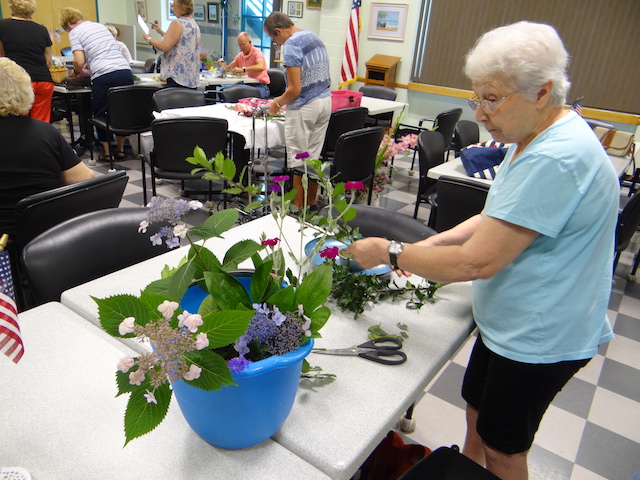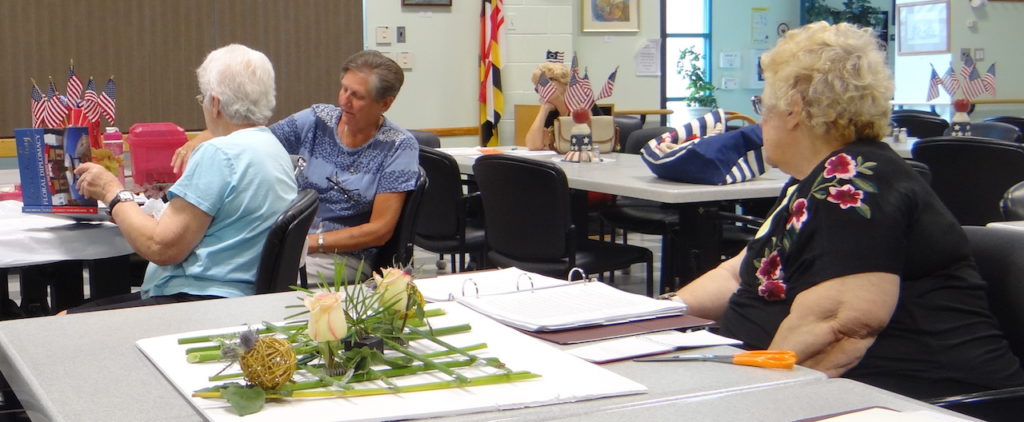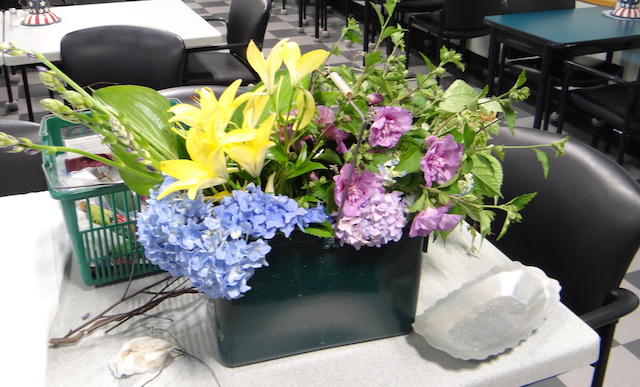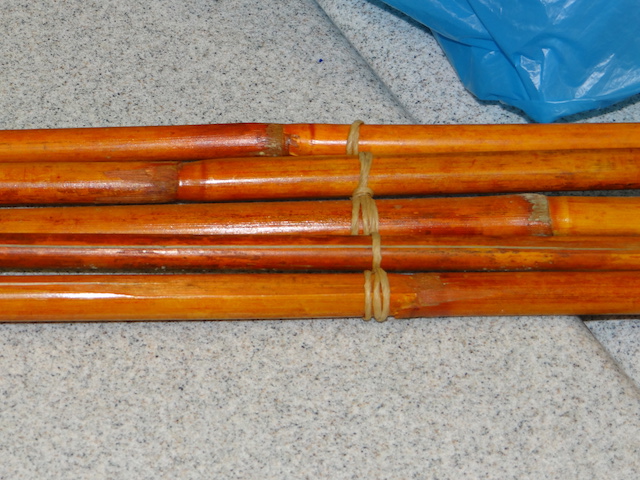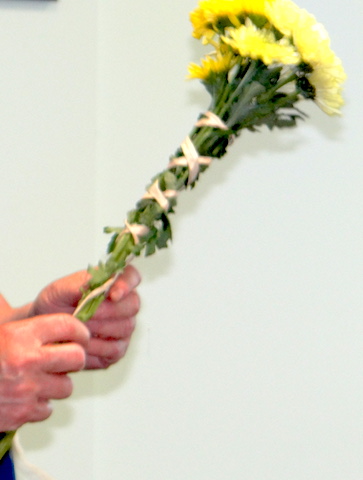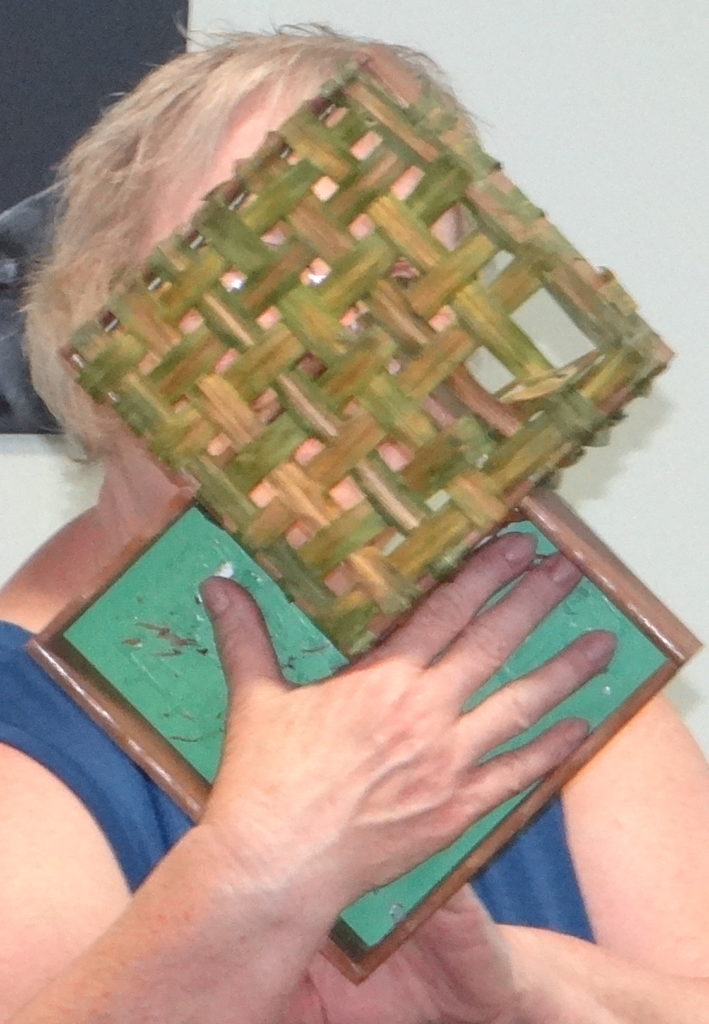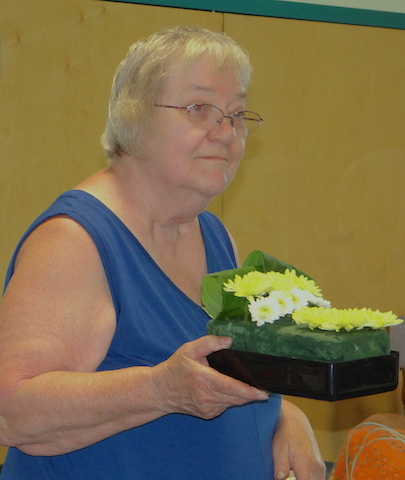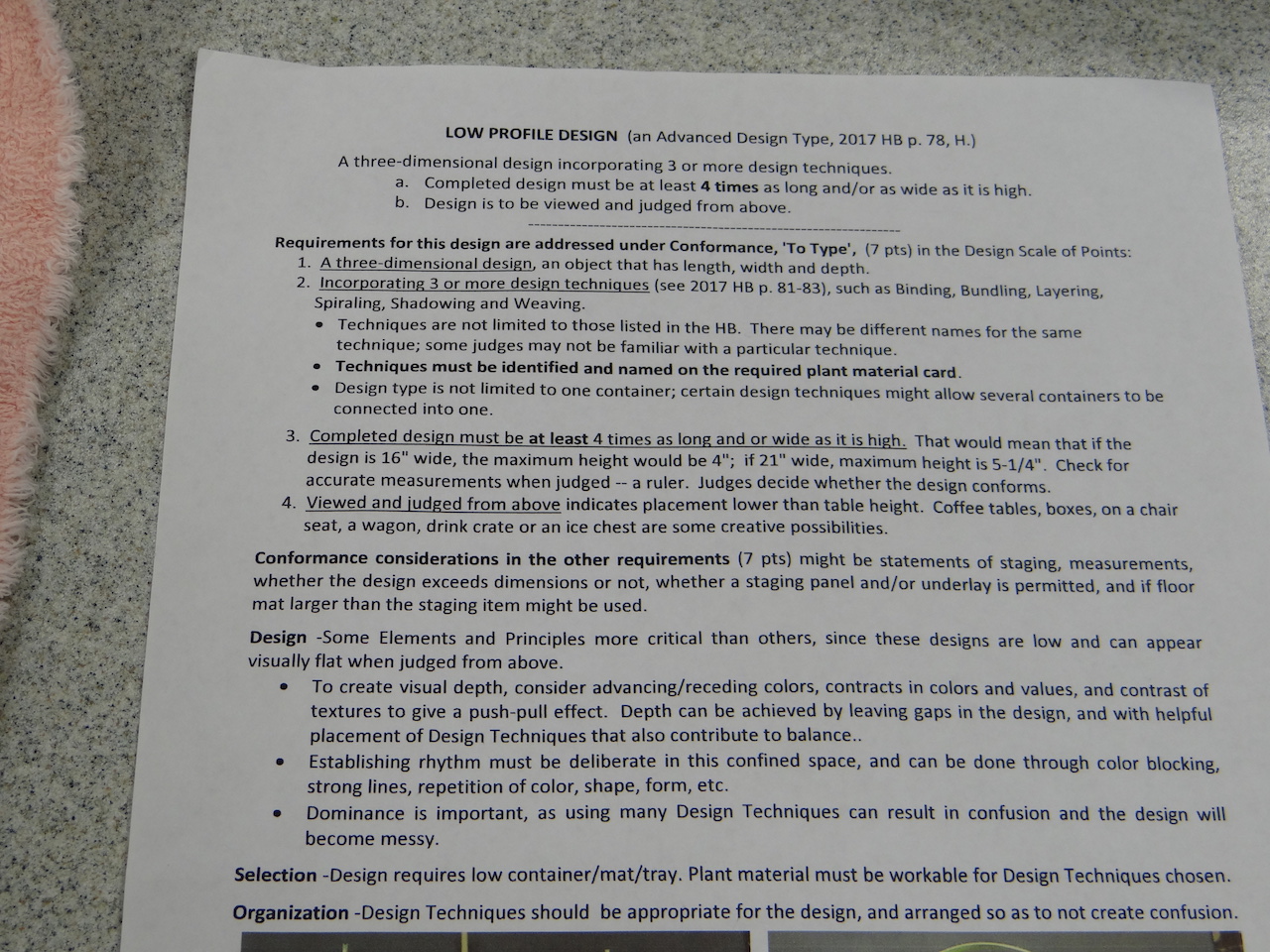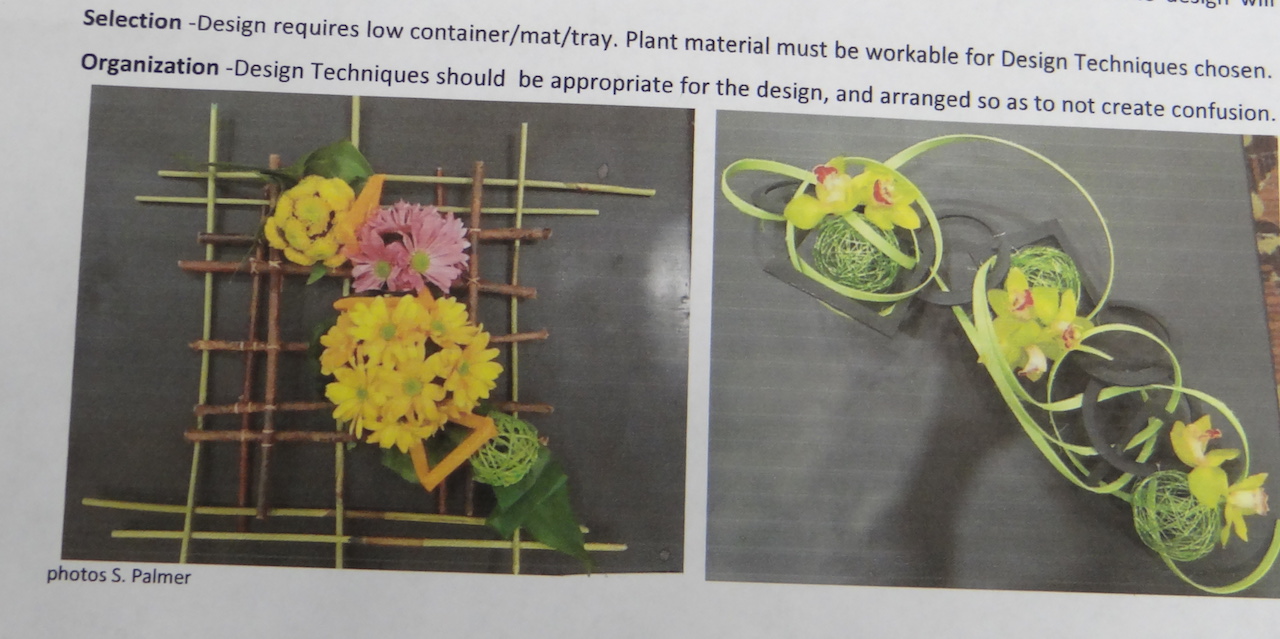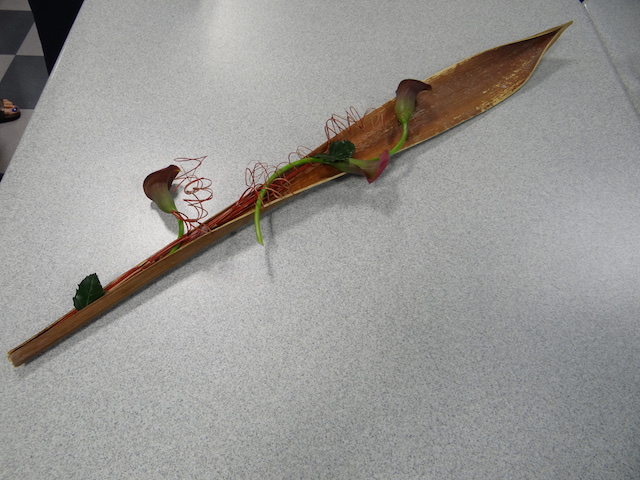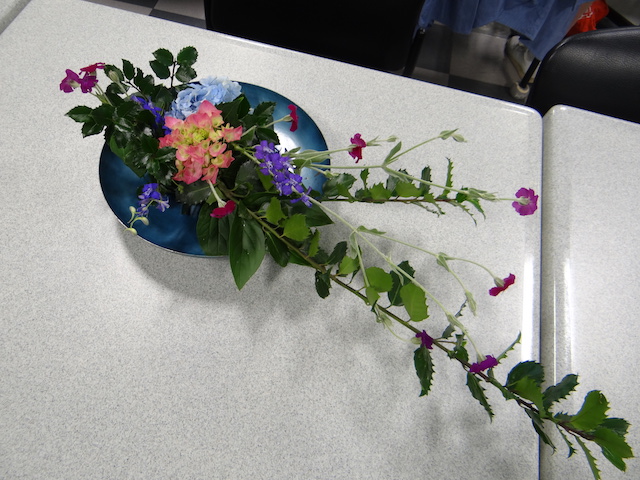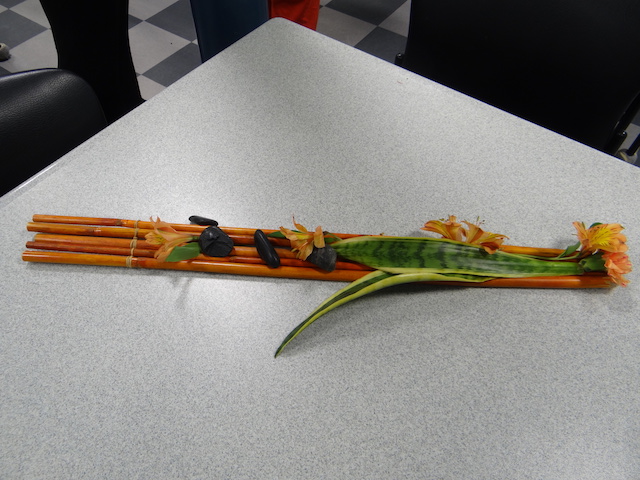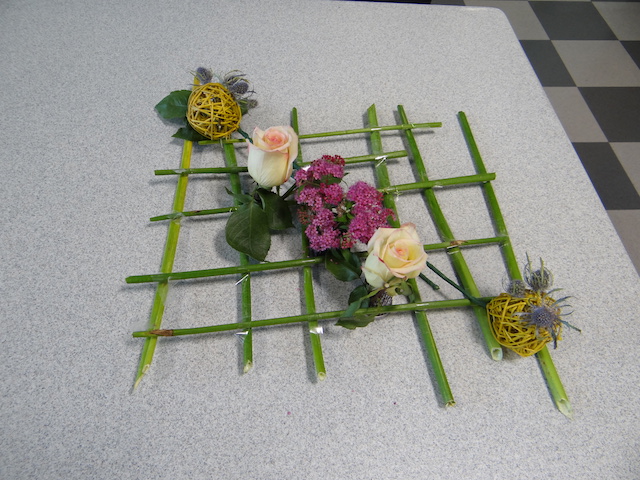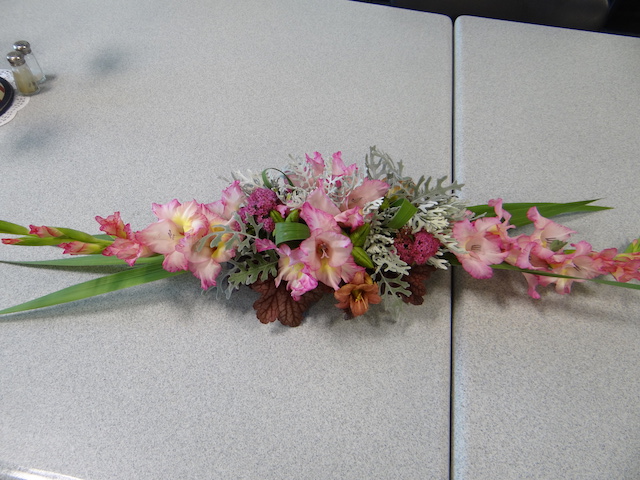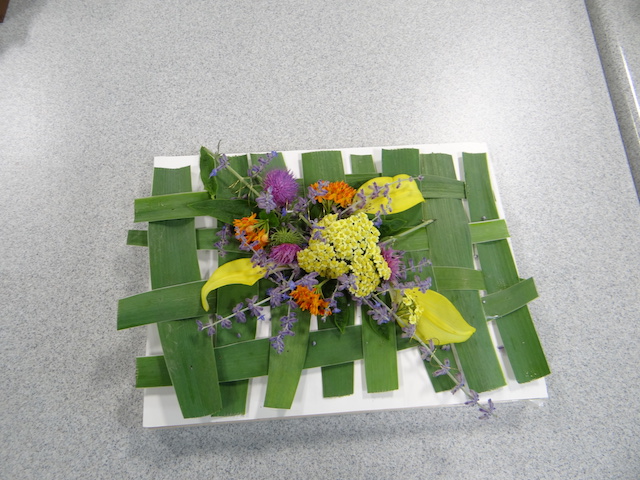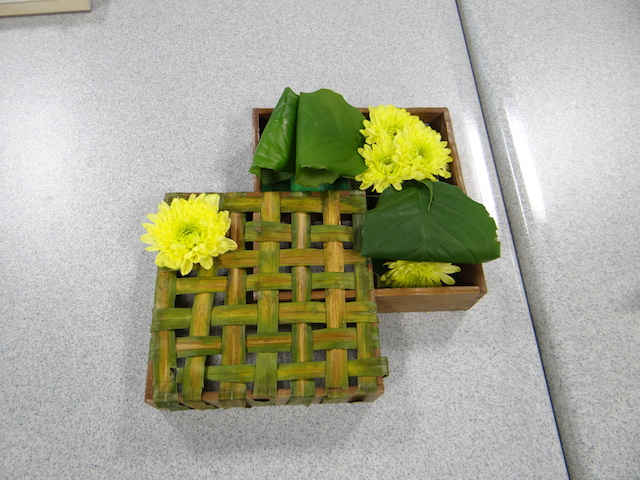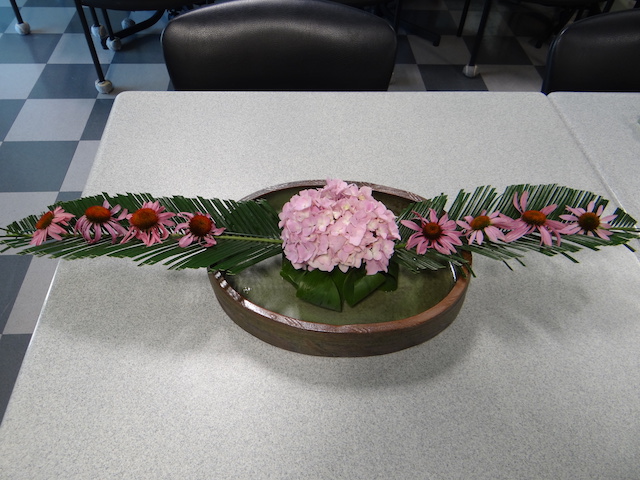Some of our CGC members attended Marilyn Potter’s ongoing Design Workshop at the Mt. Airy Senior Center in June. She was covering various techniques that are used in garden club flower show designs. She pointed out that that when asked to use several of these techniques, they should be listed on the card accompanying the design.
She discussed various types of leaf manipulation or leaf work which creates a decorative surface by applying foliage in an overlapping manner giving pattern and texture ( use of glue, sewing, staples, etc)
Abstracting involves the removal of plant parts to change the look of the plant by cutting or making the flower or leaf mimic something else. Shredding and slicing refer to ways to cut up something like a leaf. One might wrap leaves around a container, secured with rubber bands and create layers. Base technique—stacking or layering is where leaves or thin, flat materials are placed one on top of the other in stacks of three or more, secured with pick, edges getting the most attention. One might roll a leaf and secure the ends by making a slit and pulling through or using a staple. One participant grows ginger, which spread very well and had cut and rolled it to attach like small cones to picks.
Reflexing is a technique used on flowers like roses or lilies to open them by gently opening the flower petals outward while supporting each from beneath.
Collaring is completely circling an arrangement with either foliage or some other decorative material– think of tussy-mussies.
Banding is used to decoratively accent a stem or branch using one or more rings. One ties things together by bundling as in a hand-tied bouquet where the bottom flares out radially or binding, a functional way to hold things together. One can also use bunching which is not tied, where similar materials are inserted together in the arrangement.
Lashing with string, wire or other material and lacing by crossing and interweaving stems, help hold together a framework.
Weaving and sewing techniques in an arrangement might be braiding (using three strands), wrapping , as when colored wire is bent around a rod shape like a pencil or cane prior to being used as a design element or weaving such as in this design using leaf material or grass blades. Sewing might be stringing items together or putting elements on a string like peas. Connecting is when wire or foliage is used to move the eye from one element to the next, looping lightly to link them.
Basing techniques involve clustering where items are placed so closely together they lose individuality, pave where all elements are the same height–no depth variation. All stems are cut quite short. One can also terrace in a horizontal stair step fashion. Grouping collects the same material in a certain areas as all one sort of flower together with space between groups.
Shadowing uses two pieces of identical material , one being larger, are placed one immediately behind the other to “shadow”.
The design for the class was called Low Profile Design and required a very low container four inches or less in height . It would be viewed from the top down on a low table, like a coffee table. The completed design’s height would be one fourth of the width or height. (click to enlarge)
Here are some of the designs submitted by participants for critique.

